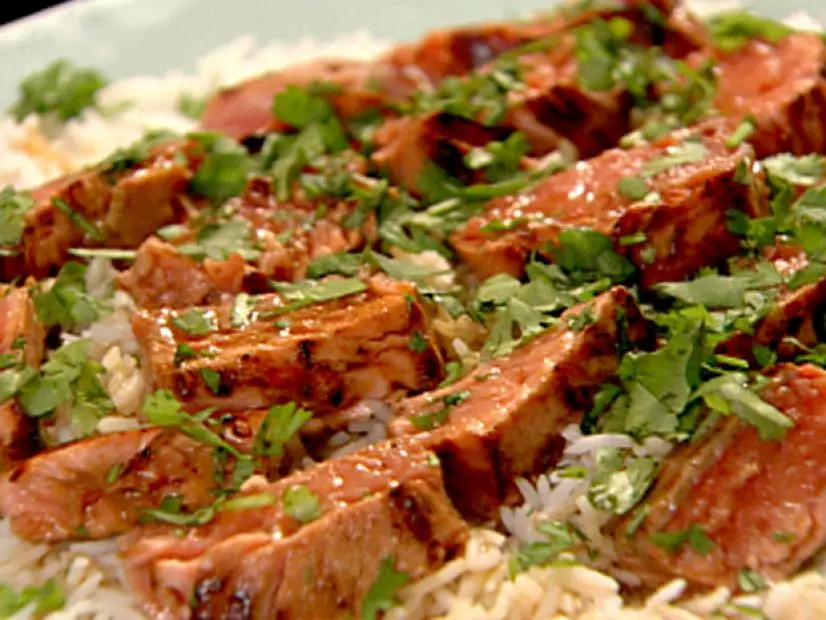Ingredients
Equipment
Method
- In a freezer bag, combine the mustard or wasabi paste, Worcestershire sauce, soy, oil, and sake and add the salmon fillets. Leave to marinate for about 20 minutes.
- Follow packet instructions for the rice, or rice-cooker handbook or just put rice in a pan, bruise cardamom pods and chuck them in too, and put double the volume of water as you have rice. Bring to the boil, then turn down to the lowest you possibly can, clamp on a lid and leave until the rice has absorbed the water and is cooked, about 15 minutes.
- Heat a smooth griddle or nonstick skillet, and cook the salmon fillets for 1 1/2 minutes on 1 side then a minute on the other side. Remove the salmon, double wrapping each fillet in foil parcels and let them rest for 10 minutes on a wooden board or a pile of newspapers.
- Bring the sake to a boil in a tiny little saucepan, like one you might melt butter in, to let the alcohol taste evaporate. Take the pan off the heat and add the other sauce ingredients.
- Unwrap the salmon fillets, removing them to a wooden board for carving as you do so.
- Arrange some freshly boiled rice on 2 plates, and slice the salmon fillets into thin slices. Lay the carved salmon on top of the rice and spoon over the sauce, letting it gloss the fish and drip here and there over the rice. Scatter the cilantro on top.
Notes
1. For deeper flavor, consider marinating the salmon for up to 30-60 minutes, but avoid over-marinating due to the acid in Worcestershire sauce which can 'cook' the fish.
2. Resting the salmon in foil parcels is crucial. This allows the residual heat to gently finish cooking the fish, ensuring it remains moist and flaky, preventing dry salmon.
3. When cooking rice, use cold water and avoid lifting the lid during the absorption phase to maintain consistent temperature and steam, leading to perfectly cooked, fluffy grains.
4. Boiling the sake for the sauce is important to evaporate the alcohol, leaving behind its nuanced flavor without the harshness. Taste and adjust the final sauce for balance.
2. Resting the salmon in foil parcels is crucial. This allows the residual heat to gently finish cooking the fish, ensuring it remains moist and flaky, preventing dry salmon.
3. When cooking rice, use cold water and avoid lifting the lid during the absorption phase to maintain consistent temperature and steam, leading to perfectly cooked, fluffy grains.
4. Boiling the sake for the sauce is important to evaporate the alcohol, leaving behind its nuanced flavor without the harshness. Taste and adjust the final sauce for balance.
